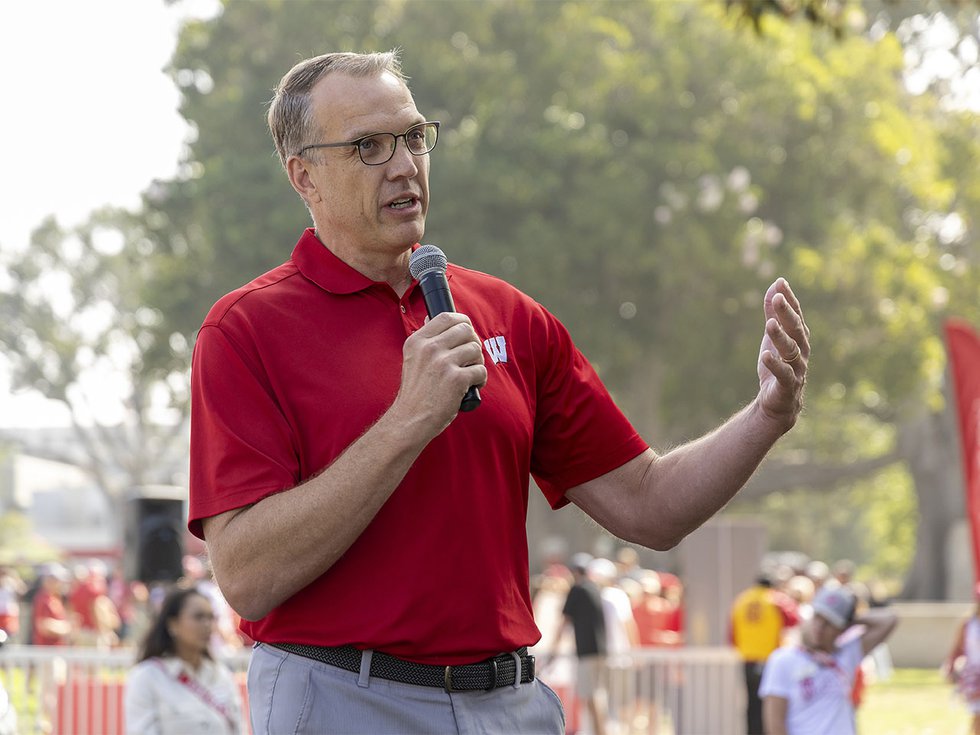An Oct. 22 message from UW-Madison athletic director Chris McIntosh to Badgers fans, clocking in at more than 1,000 words, is his most recent attempt to explain the extraordinary shifts that are dramatically altering college sports.
As if wholesale changes to the policies governing transfers, conference realignment and name, image and likeness (NIL) weren’t enough, coming soon are the terms of a settlement in the historic $2.8 billion House vs. NCAA antitrust lawsuit. These terms haven’t yet been finalized but, at minimum, “college athletic departments will be allowed to share revenue directly with student-athletes,” says McIntosh’s letter.
That makes it sound like they would have been sharing revenue with athletes for years, if only universities had their way over the dysfunctional NCAA. But universities run the NCAA and make its rules.
McIntosh explains that UW will share about $22 million per year among its 800-plus student athletes. That amount doesn’t include any NIL money.
He signs off by asking readers for their “leadership, generosity, and continued support” moving forward, which a football season-ticket holder I spoke with translated as a signal to “get out your checkbooks.”
That shouldn’t come as a surprise to anyone who has monitored the changes to college sports since 2009, when former UCLA basketball player Ed O’Bannon sued the NCAA for licensing the likenesses of football and basketball players to video game companies without cutting athletes in on the deal. That lawsuit, and others filed in the years since, have revealed how much money was being made on the backs of athletes, especially those who play football and basketball, which bring in revenue that funds programs like golf, tennis and soccer.
Of course, cutting athletes in on the business, which will start next school year, means needing to bring in even more money. The athletic board in April approved a budget that included a 5.8% increase in expenses over 2023-24. That number promises to be even higher next year and the same goes for the revenue line, thanks to more money from media deals associated with a larger conference.
When McIntosh made the decision to fire Paul Chryst in 2022 and bring in Luke Fickell, along with making over the south end zone stands at Camp Randall, he explained that the football operation (along with men’s basketball, to a lesser degree) needed to float the rest of the department. The suggestion was that the stakes were too high in the changing landscape to watch the program continue to decline under Chryst.
Two years after that change, there has not yet been a turnaround under Fickell. The Badgers haven’t defeated a ranked team since 2021, a streak that was extended on Nov. 2 with an embarrassing 42-10 loss at Iowa. Many observers feel that Fickell needs to bring in an accomplished quarterback via the transfer portal, a move that will likely require — you guessed it — more money.
Much of the appeal of college sports comes from nostalgia, with the university’s academic mission and alumni warm feelings often bleeding into gameday traditions, like the Law School’s annual cane toss before the Homecoming game. But college football in 2024 doesn’t look much like it did even 10 years ago. Whether fans will continue to love it enough to pay more for it is the big question.


